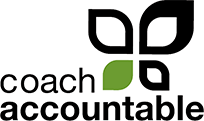Group Courses
Courses allow a coach to define a timeline of assignments, materials, and communications to be given to a given course participant over a span of days, weeks, or months.
Groups allow a coach to put 2 or more coaching clients together and allow them to jointly participate in Group Actions, Group Metrics, and Group Worksheets, wherein each group member does their thing which counts towards the overall progress of the group (for example Group Metrics, wherein each person reports their number which contributes to the overall Group Metric, computed as either the sum or average of individual performance).
These two tools for structuring sophisticated coaching programs used to be completely separate: Courses could be taken only by individual clients and their progress and results were kept completely separate, and there was no such thing as a Group going through a Course all together with shared results.
With Group Courses these structures for program delivery can be combined: Groups of coaching clients can embark together on the same course, and all items of the course will be delivered as group items. Say Day 1 of a course entails an Action assignment to call on five prospects. Members of a group taking that course would each have that assignment, and could all see the overall progress of everyone in the group, i.e. who is done and who is not.

Like regular Group items, everyone can see everyone else’s progress and make comments.
Starting up a Group Course is as simple as choosing a Group to be the participant in your Course:

In addition to individual clients, entire Groups can be put into a Course.
When choosing to put a Group into a Course, you can indicate exactly which members of the Group will be doing it, handy in cases when one or more members will not be joining in:

Choose all or some of the group members to be part of the Course.
Group Courses versus Individual Ones
Group Courses are fully backwards-compatible: any day-based course that was originally setup to be delivered to individual clients can also be delivered to groups, and vice-versa. So when it comes to designing a course, be it for Groups or for individuals, the process is the same.
That said, you might spin off a clone of a course originally designed for individual, and tweak the wording to directly address the group setting of your participants. For example:

Oh yeah, did I mention you can make course items that get sent out only after everyone has completed the previous assignment?
Blending Group and Individual Components
Depending on whether you put individuals or a Group into a Course, the entire track will be all individual items or Group items. But sometimes it’s not appropriate to have all parts of a course be collectively shared.
In these cases you can create 2 separate Courses which are meant to be run in parallel: the Group course for the shared components, and the Individual course for assignments that should be kept private to the respective individuals taking the course. To set the course in motion with both its group and individual components, put the group in the Group Course, and the respective individuals all into the individual Course.
Managing Group Course Progress
Just like with individual courses, you can see an overview of how the group of course participants are doing:

Like with individuals, clicking the “Modify this course participation” button allows you to pause, rewind, fast forward or altogether stop the course progression. You can also add or remove group members.
Group Courses are a fantastic way to put a collection of people through a standardized program, and have them benefit from the joint accountability and transparent results as the program unfolds. Like Group assignments given out in an ad hoc fashion, the open transparency is powerfully motivating to individuals who are a part of the group.
As you might imagine, no one wants to be the last person to mark an action complete.
More recently: Course Action Projects
Previously: Accept Client Payments online now via Stripe and Authorize.net
